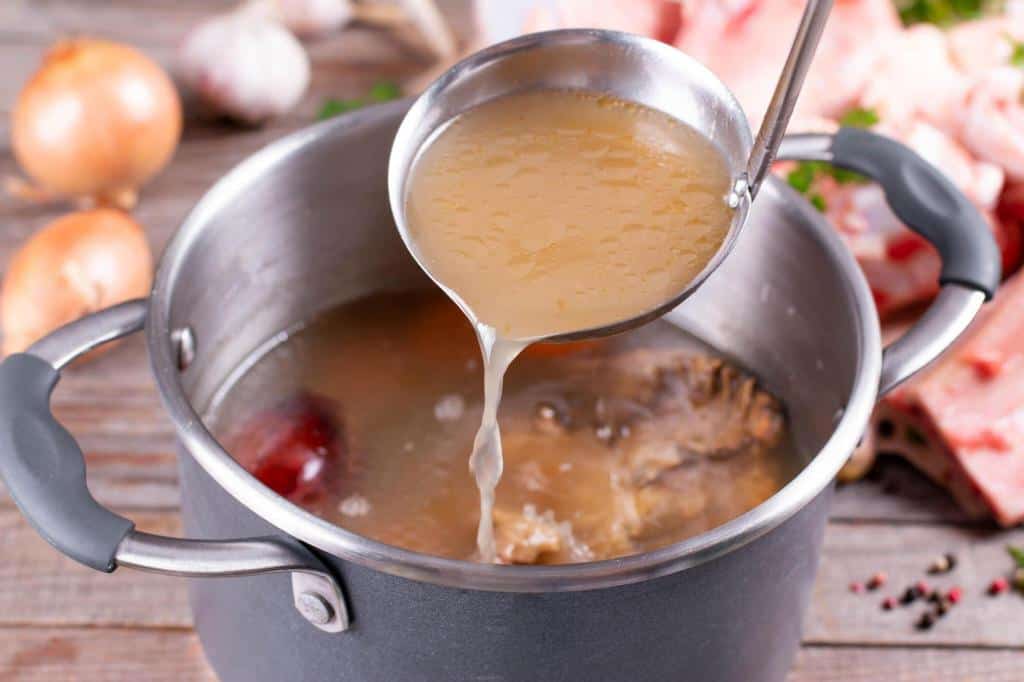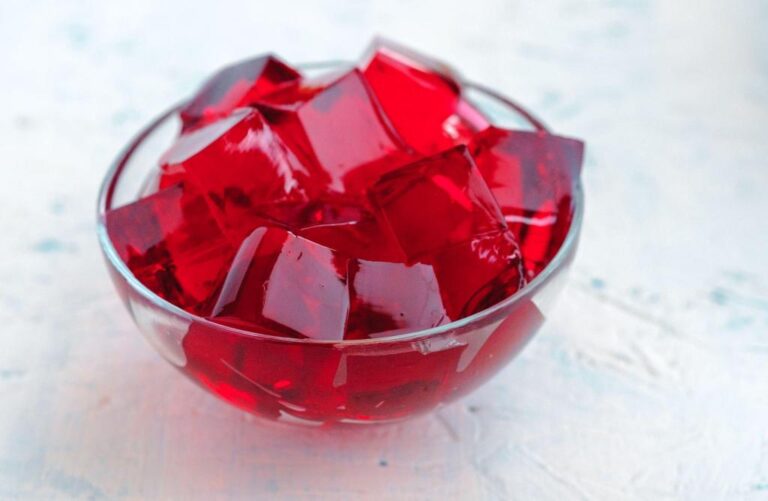Are Chicken Stock and Chicken Broth the Same? Let’s Clear the Air!

Have you ever been in the middle of a recipe, staring at a jar of chicken stock and wondering if it’s the same as chicken broth? You’re not alone! Many home cooks, including myself, have found themselves scratching their heads over this culinary conundrum. While both chicken stock and broth serve as excellent bases for soups and sauces, they differ in preparation and flavor.
Chicken stock is typically made from simmering bones, which creates a richer and more gelatinous liquid. In contrast, chicken broth is often made from meat and vegetables, resulting in a lighter flavor.
Understanding these differences can enhance your cooking. For instance, if you’re looking for a robust flavor in a hearty stew, chicken stock might be the way to go. On the other hand, if you want a subtle flavor for a delicate soup, chicken broth is a perfect choice. So, next time you’re at the store, consider your dish’s needs and choose accordingly!
The Basics: Chicken Stock vs. Chicken Broth

Let’s set the record straight right off the bat: chicken stock and chicken broth are not the same! While they share a common ancestor—chicken, of course—they come from different parts of the chicken and have unique culinary purposes.
Chicken Stock: This liquid gold is made primarily from bones, often simmered for an extended period. The long cooking time allows the collagen and gelatin to seep out from the bones, resulting in a rich, thicker liquid.
Chicken Broth: On the flip side, chicken broth is like a hearty hug in a bowl. It’s made from meat, vegetables, and sometimes herbs, which gives it a lighter, more flavorful profile. Think of broth as your go-to for sipping or quick soups.
A Quick Comparison Table
| Feature | Chicken Stock | Chicken Broth |
| Main Ingredient | Bones and cartilage | Meat, vegetables, and herbs |
| Cooking Time | 6-8 hours | 1-2 hours |
| Texture | Thicker, gelatinous | Lighter, broth-like |
| Flavor | More subtle, less flavorful | Richer, more robust |
| Best Uses | Soups, sauces, braises | Drinking, soups, risottos |
The Similarities: What They Share
Now that we’ve cleared up the differences, let’s take a moment to appreciate what chicken stock and chicken broth have in common.
1. Both Are Liquid Gold
Both stock and broth result from simmering ingredients—whether it’s meat, bones, or vegetables. The process extracts flavors and nutrients, giving you a liquid base that’s perfect for countless dishes.
2. Culinary Powerhouses
Whether you use chicken broth for a cozy soup or chicken stock to elevate a rich sauce, both serve as fantastic bases. They add depth and complexity to your culinary creations, transforming a mundane dish into something extraordinary.
3. Reduce Food Waste
I’ve always believed in minimizing food waste, and both chicken stock and broth help achieve that goal. Got some wilting veggies, chicken scraps, or leftover herbs? Toss them in a pot and simmer them down into a flavorful broth or stock. It’s a win-win!
4. Health Benefits
Both options pack a punch when it comes to nutrition. Depending on the ingredients you use, they can provide protein, minerals, and other essential nutrients. Chicken broth, in particular, is known for its soothing qualities—especially when you’re feeling under the weather.
Diving Deeper: The Differences
Let’s dig a little deeper into what sets chicken stock and broth apart, starting with their distinct flavors and textures.
Chicken Broth: A Symphony of Flavor
Chicken broth is your flavor powerhouse. I love to simmer chicken meat with vegetables and herbs for an aromatic, savory liquid that bursts with flavor. Here’s how I typically prepare my broth:
Broth Recipe:
- Ingredients:
- 1 whole chicken or chicken parts (like thighs or breasts)
- 1 onion, quartered
- 2 carrots, chopped
- 2 celery stalks, chopped
- 2-3 garlic cloves
- Fresh herbs (thyme, parsley, or bay leaf)
- Salt and pepper to taste
- Water to cover
- Instructions:
- Place all the ingredients in a large pot and cover them with water.
- Bring to a boil, then reduce to a simmer.
- Let it simmer for 1-2 hours.
- Strain the solids out, and you’ve got yourself a flavorful broth!
Chicken Stock: The Rich and Hearty Option
If you want a rich, hearty base for your stews and sauces, chicken stock is your best friend. The long simmering time allows the collagen from the bones to dissolve, giving stock its thick, velvety texture.
Stock Recipe:
- Ingredients:
- 2-3 pounds of chicken bones (carcass, wings, etc.)
- 1 onion, quartered
- 2 carrots, roughly chopped
- 2 celery stalks, roughly chopped
- 1-2 garlic cloves
- Fresh herbs (parsley, thyme, or bay leaves)
- Water to cover
- Instructions:
- Combine all ingredients in a large pot.
- Fill with water, ensuring the bones are submerged.
- Bring to a boil, then reduce to a low simmer for 6-8 hours.
- Strain the solids, and voilà—your stock is ready!
Key Differences in Use
While both chicken stock and broth can often replace one another, I find that their unique qualities shine in different recipes:
- Use chicken broth when you want a robust, flavorful base for soups or sipping. It’s perfect for when you’re feeling under the weather or want to warm up with a comforting cup.
- Opt for chicken stock when you’re cooking something that requires a thicker consistency, like sauces or stews. It adds a depth of flavor and richness that can take a dish from bland to grand.
| Also read: Can You Drink Chicken Broth as a Beverage ? |
How to Use Them: Cooking Tips and Tricks
Let’s talk about how to maximize your culinary creations with these delicious liquids.
In Soups and Stews
- Chicken Broth: I always start my soups with broth. It brings a burst of flavor that makes a simple vegetable soup sing. Just add in your chopped veggies, some noodles, and maybe a splash of soy sauce or a squeeze of lemon for an extra kick.
- Chicken Stock: When I’m making a hearty chicken pot pie or a rich stew, stock is my go-to. Its thick, gelatinous texture provides a perfect base for those comfort foods that feel like a warm hug.
In Sauces
- Broth for Flavor: When I’m whipping up a quick pan sauce, I often deglaze the pan with broth. It lifts all those delightful browned bits and transforms them into a flavorful sauce that pairs perfectly with chicken or veggies.
- Stock for Body: For cream sauces, stock thickens and enriches the flavor profile, making it feel luxurious and indulgent.
In Grains and Legumes
- Broth Infusion: I love cooking rice or quinoa in chicken broth instead of water. It’s like giving my grains a spa day—infusing them with flavor that elevates any dish.
- Stock in Stews: When I’m cooking legumes like lentils or chickpeas, I always reach for stock. The richness helps them absorb flavor and results in a more satisfying meal.
A Quick Storage Tip
Both chicken stock and broth can be stored in airtight containers in the fridge for up to a week. If you want to keep them longer, freeze them! I like to portion out leftovers in ice cube trays—perfect for when I just need a splash of flavor without thawing an entire container.
Conclusion: A Flavorful Journey
So, there you have it! Chicken stock and chicken broth might share a family resemblance, but they each bring their unique flavor and texture to the table. Whether you’re simmering a pot of soup or whipping up a rich sauce, knowing when to use each can elevate your dishes from simple to sensational.
The next time you find yourself pondering the difference between chicken stock and chicken broth, remember this: it’s all about the bones, the meat, and the beautiful flavors they bring. Embrace the culinary adventure and enjoy the warmth and comfort that both these delicious liquids can provide! Happy cooking!






